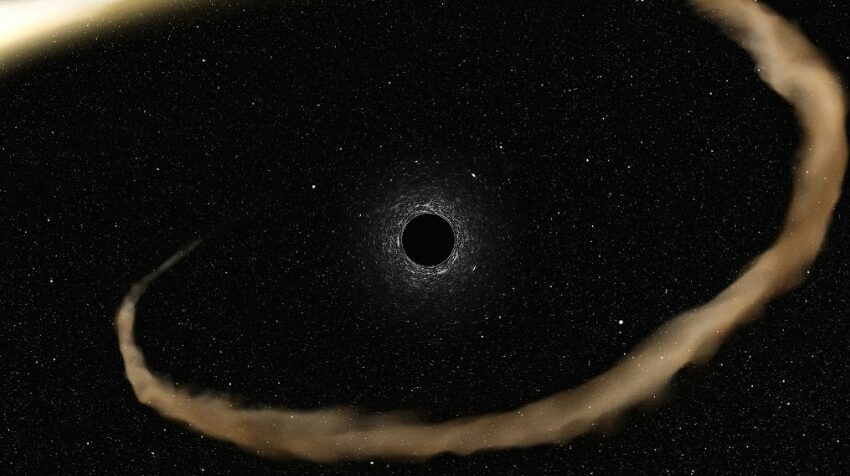
Recent advancements in observational techniques have led to the capture of high-resolution images of black hole shadows, which are challenging the completeness of Einstein’s general theory of relativity. These images reveal potential deviations in gravitational behavior near event horizons, causing scientists to question the limits of Einstein’s theory and consider the need for refinement.
Understanding Black Hole Basics
A black hole, as defined by standard astrophysics, is a region in space where gravity is so strong that nothing, not even light, can escape. These cosmic phenomena primarily form from the collapse of massive stars or through mergers. They are classified into three main types: stellar-mass, intermediate-mass, and supermassive black holes, each with unique properties and formation processes. The understanding of these black hole types is fundamental to the study of the universe.
Two critical components of black holes are the event horizon and the singularity. The event horizon is the boundary beyond which nothing can escape the black hole’s gravitational pull. The singularity, on the other hand, is the point within a black hole where matter is believed to be infinitely dense. High-resolution imaging of these regions is crucial for testing theoretical predictions and understanding the nature of black holes.
Advances in Black Hole Imaging Technology
The Event Horizon Telescope and similar arrays have been instrumental in producing the new high-resolution images of black hole shadows. These technological advancements have improved resolution capabilities, allowing for detailed scrutiny of shadow edges. The images captured on November 8, 2025, provide unprecedented detail on black hole silhouettes, challenging our understanding of these cosmic giants.
These new high-res black hole images are the result of overcoming significant observational challenges. Techniques such as interferometry across global telescopes have been used to capture data that probes the effects of gravitational lensing, a phenomenon predicted by Einstein’s theory of relativity.
Discrepancies in Black Hole Shadows
The new images reveal that the observed shadow sizes and shapes deviate from predictions made under pure general relativity. Specific anomalies, such as asymmetric distortions, suggest the presence of additional physics beyond Einstein’s framework. These visual discrepancies are believed to be influenced by quantum gravity near the event horizon, a region previously thought to be governed solely by general relativity.
These findings, based on the analysis of black hole shadows on November 5, 2025, have sparked renewed interest in the study of black holes and the laws of physics that govern them.
Refining Einstein’s General Relativity
Given these discrepancies, scientists have proposed that Einstein’s equations need to be refined to better explain the phenomena observed near black holes. Theoretical adjustments, such as incorporating quantum effects to replace point-like singularities with more stable structures, are being considered. These refinements aim to reconcile general relativity with quantum mechanics without discarding Einstein’s equations entirely.
A study published on March 3, 2025, proposed that tweaks to general relativity could finally explain what lies at the heart of a black hole. This proposition has opened new avenues for research and has the potential to revolutionize our understanding of black holes and the universe.
Testing for Black Hole Diversity
On November 5, 2025, a new method was introduced that explores the possibility of different types of black holes. This method uses imaging data to differentiate black holes based on their spin or charge. The existence of varying black hole properties, like Kerr versus Schwarzschild types, could produce measurable differences in observed shadows.
Confirming the existence of diverse black hole types would have significant implications. It could indicate breakdowns in universal relativistic predictions, further challenging Einstein’s theory. This method of testing for black hole diversity is a promising development in the field of astrophysics.
Implications for Astrophysics and Beyond
The challenges to relativity posed by these new black hole images could reshape our models of galaxy evolution. Supermassive black holes play central roles in these models, and any changes to our understanding of their behavior could have far-reaching effects. Furthermore, these challenges could lead to the validation of alternative theories like loop quantum gravity, expanding our understanding of the universe.
Future observational campaigns will be needed to confirm or refute these challenges. The breakthroughs in black hole imaging achieved in 2025 have set the stage for these future endeavors, marking a new era in the study of black holes and the laws of physics that govern them.
More from MorningOverview